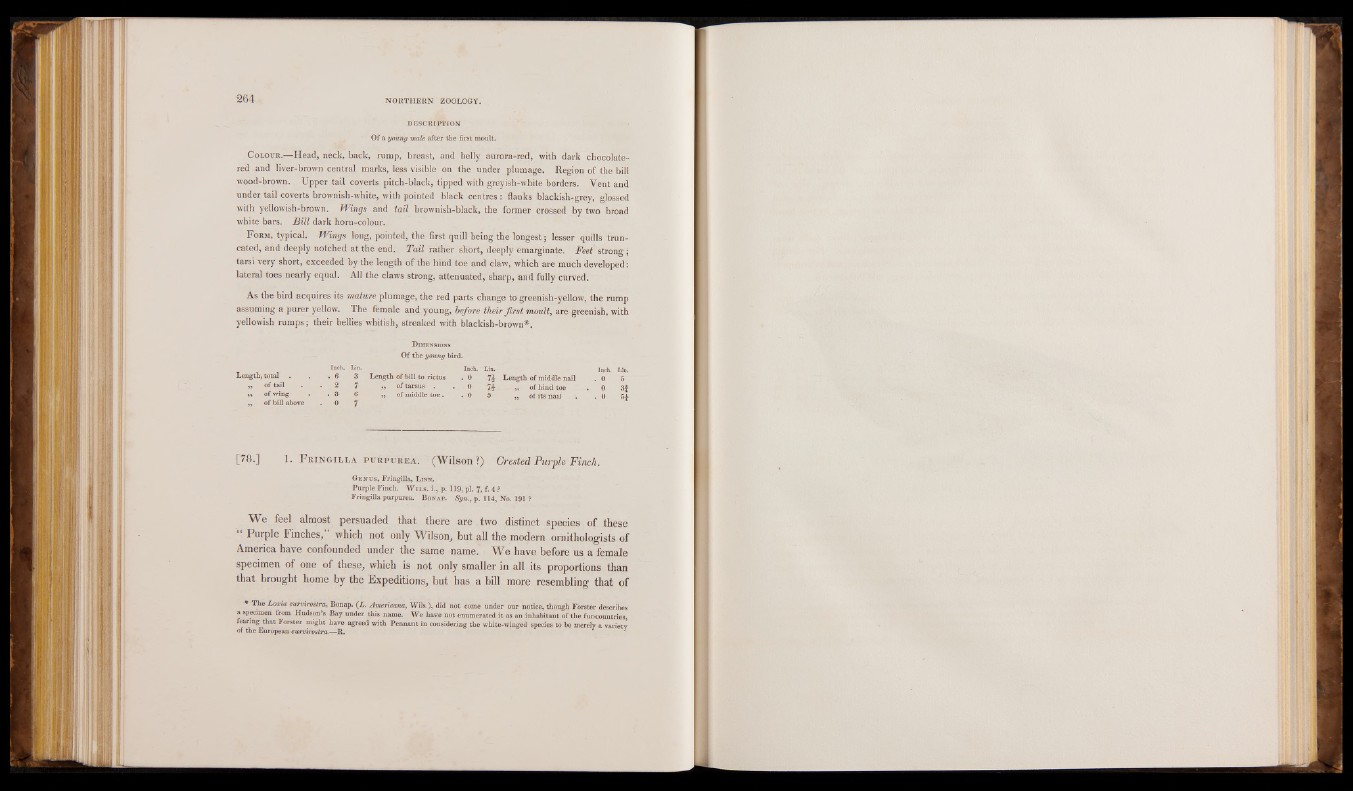
DESCRIPTION
Of a young male after the first moult.
C olour.—Head, neck, back, rump, breast, and belly aurora-red, with dark chocolate-
red and liver-brown central marks, less visible on the under plumage. Region of the bill
wood-brown. Upper tail coverts pitch-black, tipped with greyish-white borders. Vent and
under tail coverts brownish-white, with pointed black centres : flanks blackish-grey, glossed
with yellowish-brown. Wings and tail brownish-black, the former crossed by two broad
white bars. Sill dark horn-colour.
F orm, typical. Wings long, pointed, the first quill being the longest; lesser quills truncated,
and deeply notched at the end. Tail rather short, deeply emarginate. Feet strong;
tarsi very short, exceeded by the length of the hind toe and claw, which are much developed:
lateral toes nearly equal. All the claws strong, attenuated, sharp, and fully curved.
As the bird acquires its mature plumage, the red parts change to greenish-yellow, the rump
assuming a purer yellow. The female and young, before their first moult, are greenish, with
yellowish rumps; their bellies whitish, streaked with blackish-brown*.
Dimensions
Of the young bird.
Inch. Lin. Length, total . 6 3 Length of bill to rictus Inch.' Lin. Inch. ,, of tail 2 7 . 0 H Length of middle nail . 0 „ of tarsus 0 7 * . ,, of hind toe . 0 ,, of wing . 3 6 „ of middle toe. . 0 5 ,, of its nail . 0 „ of bill above 0 7
[78.] 1. F ringilla purpurea. (Wilson?) Crested Purple Finch.
Gen us, Fringilla, Linn.
Purple Finch. Wins. i., p. 119, pi. 7, f. 4 ?
Fringilla purpurea. Bonap. Syn., p. 114, No. 191 ?
We feel almost persuaded that there are two distinct species of these
“ Purple Finches, which not only Wilson, but all the modern ornithologists of
America have confounded under the same name. We have before us a female
specimen of one of these, which is not only smaller in all its proportions than
that brought home by the Expeditions, but has a bill more resembling that of
* The Loccia curmrostra, Bonap. (L. Americana, Wils.), did not come under our notice, though Forster describes
a specimen from Hudson’s Bay under this name. We have not enumerated it as an inhabitant of the fur-countries,
foefa trhineg E tuhraotp Feaonr sctuerrm mroisgthrat .h—avRe. agreed with Pennant in considering the white-winged species to be merely a variety